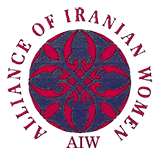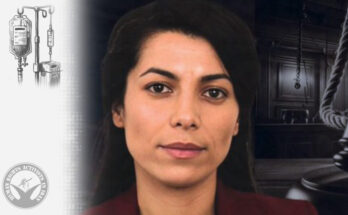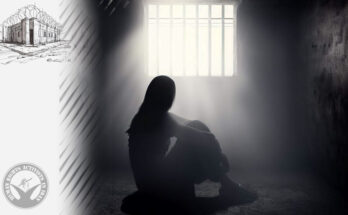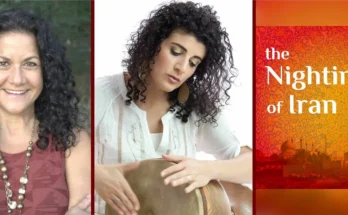Source: RFE/RL’s RadioFarda
By Michael Scollon

For many commuters in the Iranian capital, navigating the subway system means passing through “tunnels of horror.”
Entrances and corridors in Tehran’s subway stations are lined with so-called hijab guards, women wearing black chadors and green sashes. And while the role of these squads is clear — to spot and confront women not wearing the mandatory head scarf — determining responsibility for their deployment has been shrouded in mystery.
But the publication of a classified Interior Ministry document showing the state’s clear ties to the hijab guards, as well as legal action against the reformist newspaper that published the document, has revealed an apparent government cover-up that has rekindled public anger over the Islamic republic’s heavy-handed approach to enforcing the hijab law.
It has also left officials exposed to harsh criticism and calls for their resignation following the government’s insistence that the guards were voluntary and had no connection to the state.

As recently as November 22, Interior Minister Ahmad Vahidi said at a cabinet meeting that the hijab guards were not part of his ministry or the morality police, an official law enforcement body infamous for its harsh treatment of hijab violators.
Vahidi pushed back on suggestions that the hijab guards should require special permits and insisted the squads of women were carrying out their duties out of religious faith and independently of the authorities.
Vahidi described them as “popular groups” who were carrying out their Islamic duty to promote virtue and prevent vice. “Everyone has a duty for this, but it should be done with good manners and solely through verbal advice,” he said.
Watchful Eye Of ‘Morality’
Prior to the interior minister’s claims, concerns had been raised about the presence of the squads in subways in Tehran and other major cities.
Tensions remain high in Iran over the hijab law, which the authorities took steps to strengthen amid lingering tensions over 22-year-old Mahsa Amini’s death in police custody in September 2022. Amini’s death, which came just days after her detention in Tehran by the morality police for allegedly wearing her hijab improperly, led to nationwide protests and hundreds of demonstrators’ deaths across the country.
Despite lasting public anger, parliament around the anniversary of Amini’s death approved an updated version of the law that included harsher penalties for violations, including prison sentences of up to 10 years.
It also empowered three intelligence agencies — the Intelligence Ministry, the Revolutionary Guards Intelligence Organization, and the Intelligence Organization of the Judiciary — along with police, the Basij paramilitary forces, and the Headquarters for the Promotion of Virtue and Prevention of Vice to take action against women in violation of the mandatory hijab regulations.
This all took place as reports of the appearance of the hijab guards emerged amid efforts to suppress the Woman, Life, Freedom movement forged after Amini’s death.
And in late October, outrage came to the fore again after another young woman died following an alleged encounter with “morality” enforcers earlier that month.
Armita Garavand, 17, died after falling into a coma after an alleged confrontation at a Tehran subway station on October 1. Some reports have suggested she was assaulted by the morality police, while others have said the hijab guards were responsible.
On November 21, prominent commentator Abbas Abdi warned in the reformist Etemad newspaper that the deployment of the guards risked further increasing public anger at the authorities and widening societal divisions.
Vahidi’s subsequent characterization of the guards as well-intentioned vigilantes did not go over well with many, including rights activists and reformist-minded media and politicians.
Mostafa Faghihi, managing director of the Entekhab news website, skewered Vahidi’s comments on X, formerly known as Twitter, on November 22.

“Interesting! So, this tunnel of horrors at the metro is a citizens’ [initiative]!” the post said. “Do people also pay their monthly salary? Are they also hired and organized under citizens’ supervision?”
On November 26, Etemad’s publication of part of a document labeled “highly confidential” and bearing the seal of the Interior Ministry, shot holes in Vahidi’s denials of a connection between the state and the hijab guards.
Presented to various government entities and dated June 9, the document laid out the responsibilities of the guards and gave instructions on the deployment of thousands of them in public places. It also outlined a broader strategy of dealing with hijab violators, who it said should be photographed in all areas of the subway, inside subway cars, and handed over to police for arrest.
The apparent link between the government and the hijab guards was further clarified when the Headquarters for the Promotion of Virtue and Prevention of Vice announced that there were more than 2,800 members of the group deployed, and that its activities were coordinated with the Islamic Revolutionary Guards Corps, the Basij forces, the Tehran municipality, the Prosecutor’s Office, and other state bodies.
The Headquarters for the Promotion of Virtue and Prevention of Vice is a government institution that shapes and enforces Iran’s morality laws and was instrumental in developing the stricter hijab legislation.




